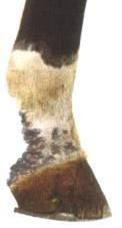Holding the Reins
Tips for maintaining correct contact: Grip: Grip on the reins should be medium – that is, the fist should not be clenched on the reins, nor should the fingers be open Some old manuals of riding claim that the rein should cross the palm of the hand, but if the rein touches the palm at all it is being gripped too tightly; the reins are held in the fingers , with the thumb pressed gently on top to prevent them slipping. The tips of the fingers may just touch the palm, but the grip should be no tighter than this unless giving an opposing aid. Keeping the fingers loose will prevent the arms from becoming tense and enables the rider to “slip” the reins when the horse stretches, and well as making a simple closing of the fingers into a significant and noticeable aid; with the fingers loose, any change in the tension of the rein, as from squeezing the fingers closed, will be felt by the horse. Likewise, with fingers half-closed, the release can also be immediate and significant. This help...
